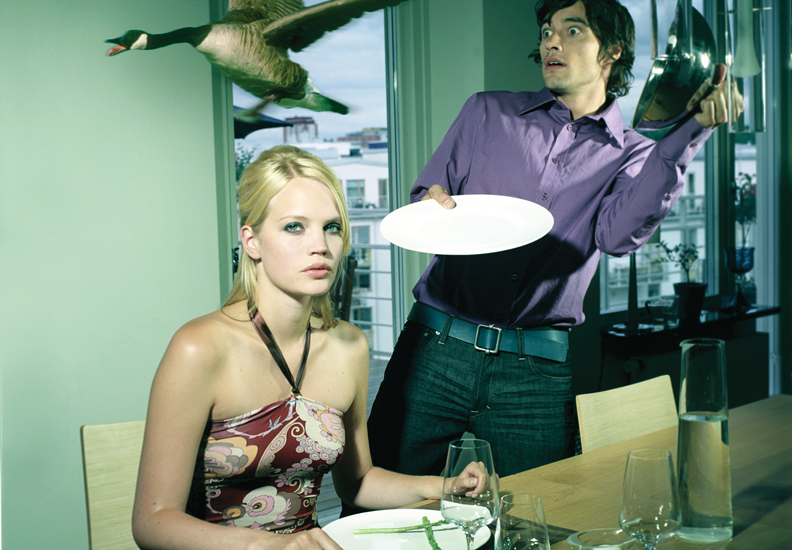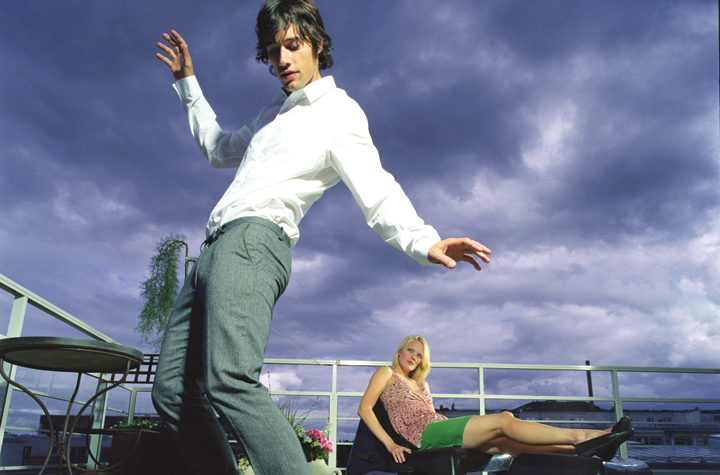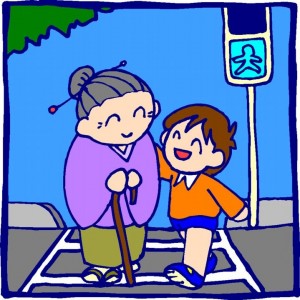In Sweden: Whatever happened to good manners?
A lively debate on several programs on Swedish radio spilled over onto the pages of newspaper Dagens Nyheter and is worth investigating.
-
 Swedish men aim to serve. Or, do they? Table and chairs by R.O.O.M; Glassware by Orrefors, Sweden; Porcelain by Ittala, Finland; Cuttlery and candeholders by Georg Jensen, Denmark; Pitcher by Skrufts Glassworks, Sweden; Walnut placemats by Classic Home NK; Silver cupola courtesy of Gondolen restaurant. Photography: Mikael Ericsson http://www.mindustries.se. Models: Daniel Giray and Sofie Svensson http://www.mikas.se.
Swedish men aim to serve. Or, do they? Table and chairs by R.O.O.M; Glassware by Orrefors, Sweden; Porcelain by Ittala, Finland; Cuttlery and candeholders by Georg Jensen, Denmark; Pitcher by Skrufts Glassworks, Sweden; Walnut placemats by Classic Home NK; Silver cupola courtesy of Gondolen restaurant. Photography: Mikael Ericsson http://www.mindustries.se. Models: Daniel Giray and Sofie Svensson http://www.mikas.se. -
-
A lively debate on several programs on Swedish radio spilled over onto the pages of newspaper Dagens Nyheter and is worth investigating. This is a debate that will never cease because it is about something concerning us all: Human behavior and “hyfs” (good manners). In the radio program the use of good manners in Sweden were compared to that in other countries and the gist of it was that rudeness and churlish behaviors are increasing in our country. What used to be considered normal good manners has decreased drastically in Sweden. In other countries it is deemed perfectly normal to give up a seat on a bus or a train to someone who better needs it, or to say “excuse me” when bumping into each other, or to smile or say “thank you” this type of behavior is something you rarely see in Sweden anymore. Many Swedes maintain that saying “excuse me” is unnecessary and that saying “thank you” is old-fashioned and out of style, and why give up your seat if you were the one who first got it anyway?
-
 Sofie: top and skirt by H&M, private shoes. Daniel: white shirt and Fishben pants byWhyRed. Photography: Mikael Ericsson http://www.mindustries.se. Models: Daniel Giray and Sofie Svensson http://www.mikas.se.
Sofie: top and skirt by H&M, private shoes. Daniel: white shirt and Fishben pants byWhyRed. Photography: Mikael Ericsson http://www.mindustries.se. Models: Daniel Giray and Sofie Svensson http://www.mikas.se. -
-
What is it that makes Swedes behave this way?
Magdalena Ribbing, who writes about manners for Dagens Nyheter, believes one of the problems is that Swedes are naturally shy. “The Swede might be so inherently shy, that he or she doesn’t want to be made visible by talking to a stranger, not even if it’s just to say ‘sorry’ or ‘thank you’. Many feel it is embarrassing. Another explanation is the current fixation on the individual, which leads to this kind of thinking: ‘I’m sitting here now, and if you who are older, handicapped or more tired must stand then that’s not my problem.’” Ribbing also lists a third explanation, the most interesting one, which is the lack of understanding or feeling among Swedes that they are all part of a greater societal community. Most Swedes seem to believe that they are all utterly alone in their own individual room, and that this anonymity is something they may carry with them out into the world. But as soon as we meet somebody, friend or stranger, we must adapt. If we understand that, Ribbing says, then we will also understand that we have to say “excuse me” and “thank you” and to open the door for each other. It is free to do so. It is common courtesy, and a better society comes out of it, even peace, Ribbing concludes. -
 Good manners, a rarity in today's Sweden?
Good manners, a rarity in today's Sweden? -
Photos here are mostly unrelated to text; they are part of a series photographed to illustrate an article on the new Nordic man in Nordic Reach - http://www.nordicreach.com/its_about/lifestyle/160/
Photography: Mikael Ericsson http://www.mindustries.se. Models: Daniel Giray and Sofie Svensson http://www.mikas.se -
-
